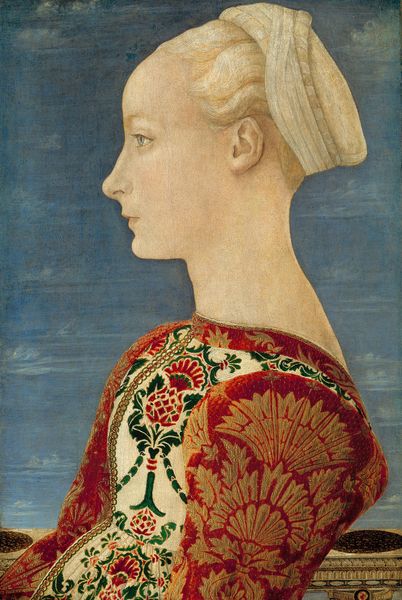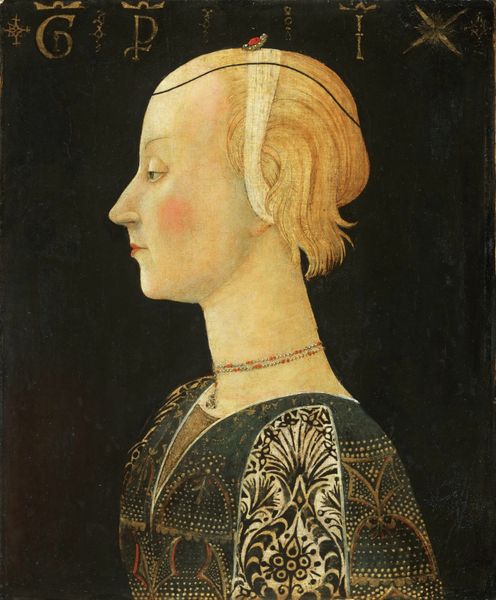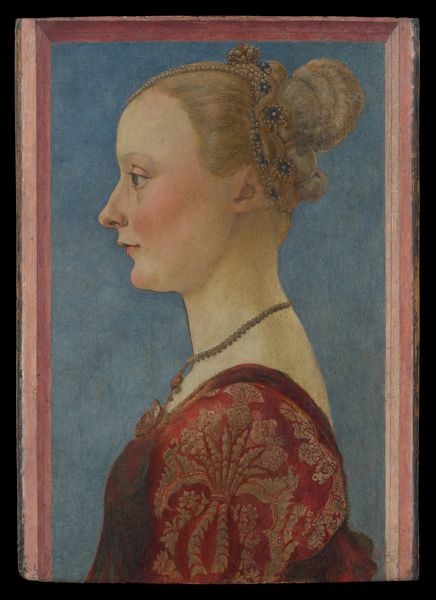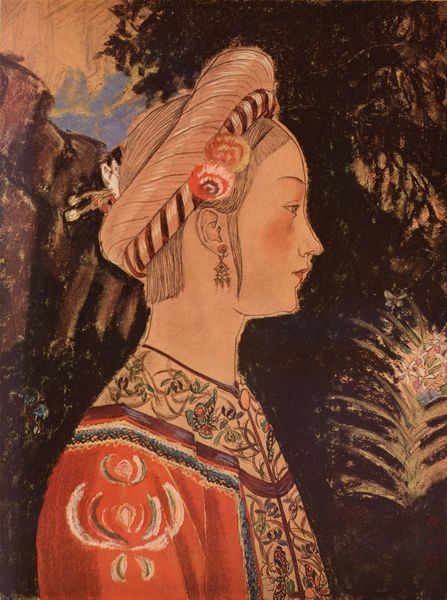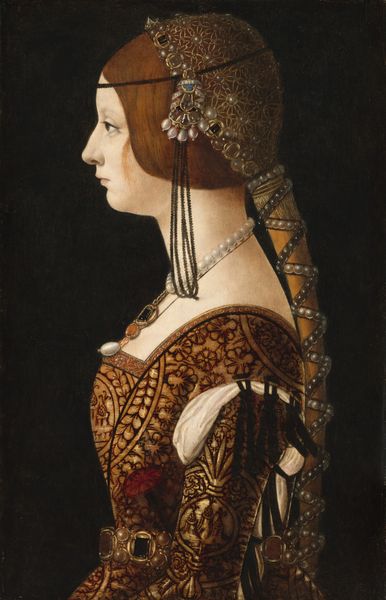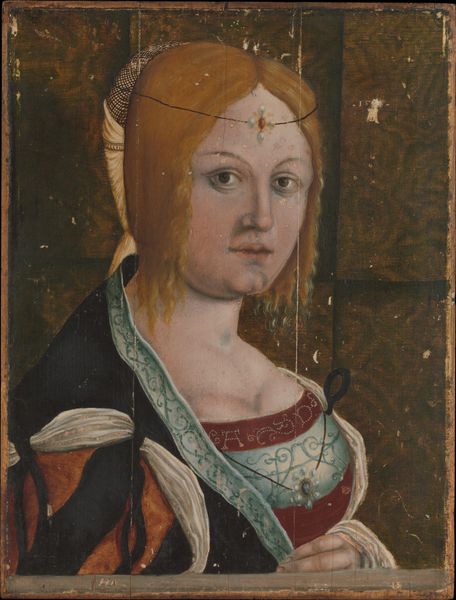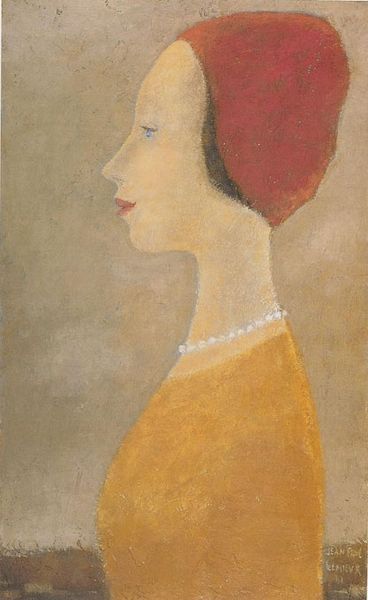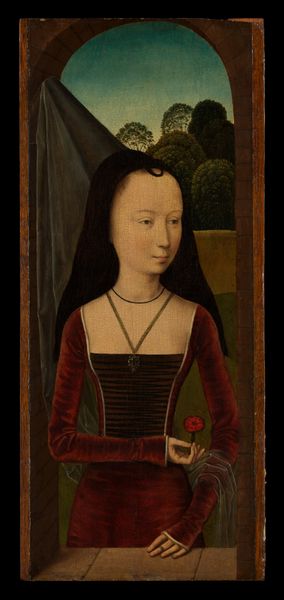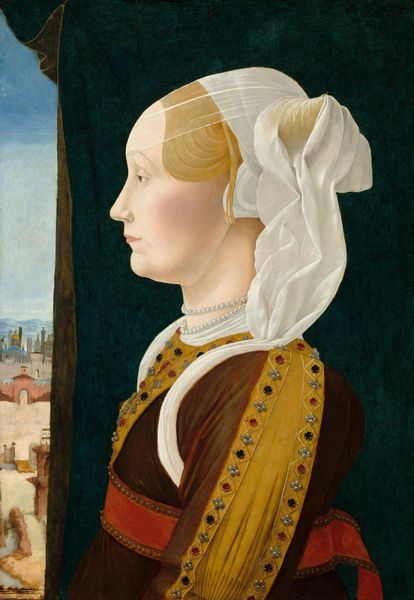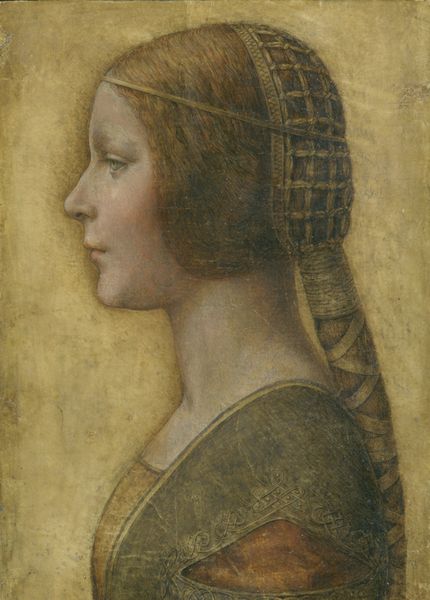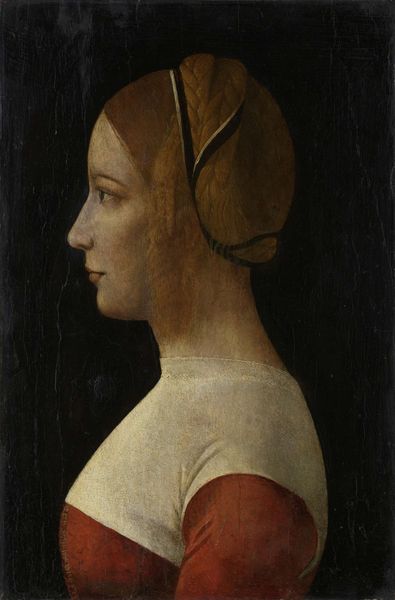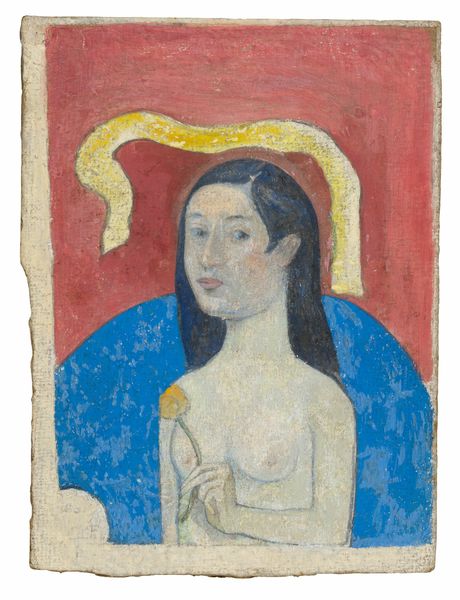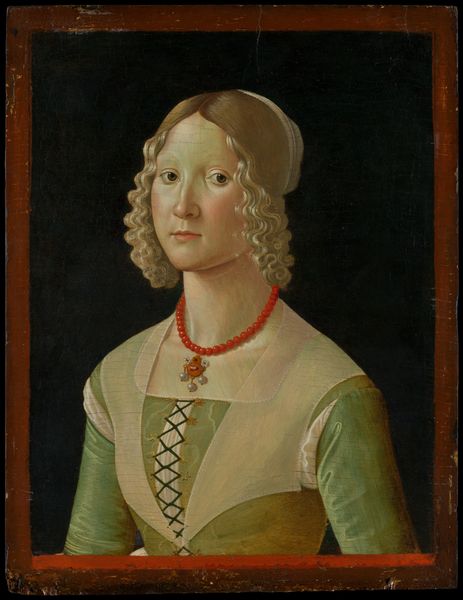
oil-paint
#
portrait
#
oil-paint
#
11_renaissance
#
oil painting
#
northern-renaissance
#
italian-renaissance
#
profile
Dimensions: 17 5/8 x 12 3/16 in. (44.8 x 31 cm); painted surface 17 5/16 x 12 in. (43.9 x 30.5 cm)
Copyright: Public Domain
Curator: Immediately, I am struck by the serene and almost severe profile. The cool blues behind the figure serve to emphasize her pale skin and elaborate attire. Editor: This striking image is believed to be "Mary of Burgundy," an oil painting executed around 1528. Its creator is identified only as Master H.A. or A.H. The portrait now resides here at the Metropolitan Museum of Art. Curator: Profile portraits were favored for official imagery, of course, but there's something deeply psychological at play here. The avoidance of direct eye contact conveys power, mystery... perhaps even a sense of vulnerability hidden beneath that controlled gaze. Editor: Absolutely. The politics of imagery are hard at work. Think of the courtly context: portraiture was used to negotiate alliances and project an image of stability. Mary of Burgundy was a pivotal figure in European power dynamics; her marriage had huge political ramifications. This portrait would likely have been circulated within courtly circles. Curator: Note the precise details of her jewelry – the pendant, the necklaces. Jewelry functioned not just as adornment but as visual shorthand, carrying messages of status, lineage, even personal allegiance. The meticulous rendering suggests a conscious effort to amplify these symbolic cues. It reminds one of a coded message of power and legacy to those "in the know". Editor: And, what about the framing of female identity here? We can debate the artist’s choices in projecting a ruler through the lens of male artists of the era. What this means to the audiences over the centuries as they have sought different kinds of symbols in this painting... Curator: Very true. It really reveals how symbols can persist across cultural memory. This image, for many viewers then and now, carries much weight. Editor: I think understanding the role this image played in its time – how it was displayed, who it was intended to impress – sheds light on the complex social landscape of the Renaissance. Curator: Seeing the psychology of symbolism intertwine with the historical and political considerations makes for a much richer viewing experience.
Comments
No comments
Be the first to comment and join the conversation on the ultimate creative platform.
